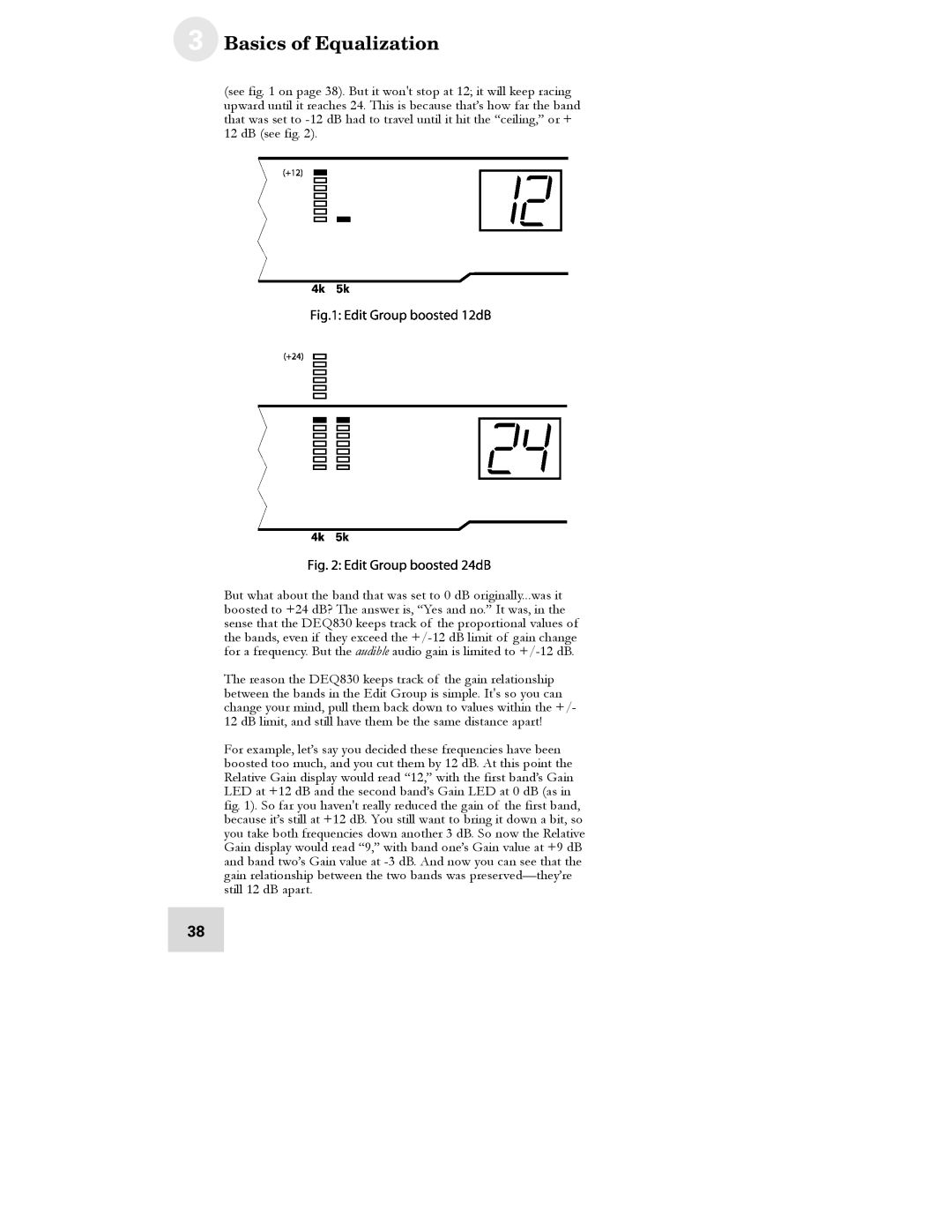
3 Basics of Equalization
(see fig. 1 on page 38). But it won't stop at 12; it will keep racing upward until it reaches 24. This is because that’s how far the band that was set to
But what about the band that was set to 0 dB originally...was it boosted to +24 dB? The answer is, “Yes and no.” It was, in the sense that the DEQ830 keeps track of the proportional values of the bands, even if they exceed the
The reason the DEQ830 keeps track of the gain relationship between the bands in the Edit Group is simple. It's so you can change your mind, pull them back down to values within the +/- 12 dB limit, and still have them be the same distance apart!
For example, let’s say you decided these frequencies have been boosted too much, and you cut them by 12 dB. At this point the Relative Gain display would read “12,” with the first band’s Gain LED at +12 dB and the second band’s Gain LED at 0 dB (as in fig. 1). So far you haven't really reduced the gain of the first band, because it’s still at +12 dB. You still want to bring it down a bit, so you take both frequencies down another 3 dB. So now the Relative Gain display would read “9,” with band one’s Gain value at +9 dB and band two’s Gain value at
38
